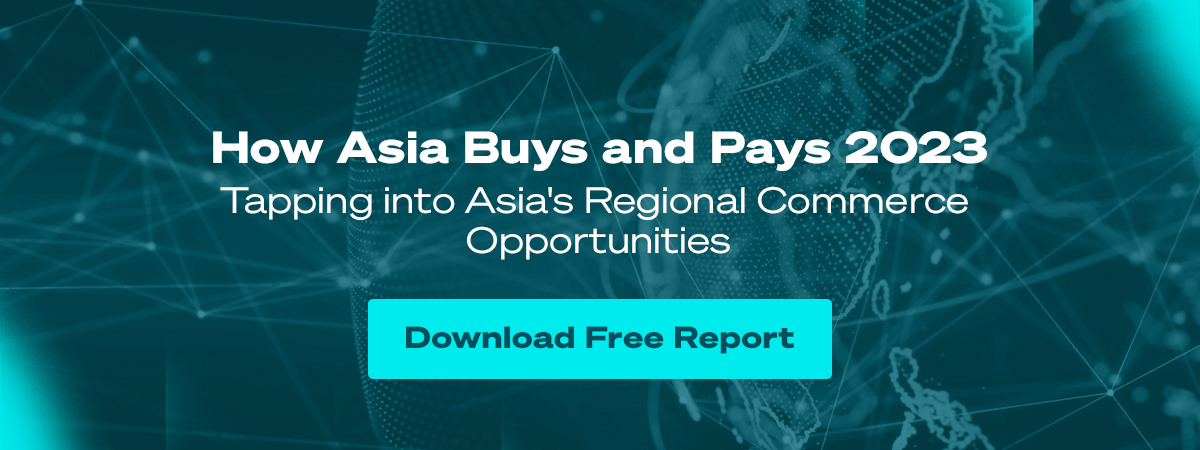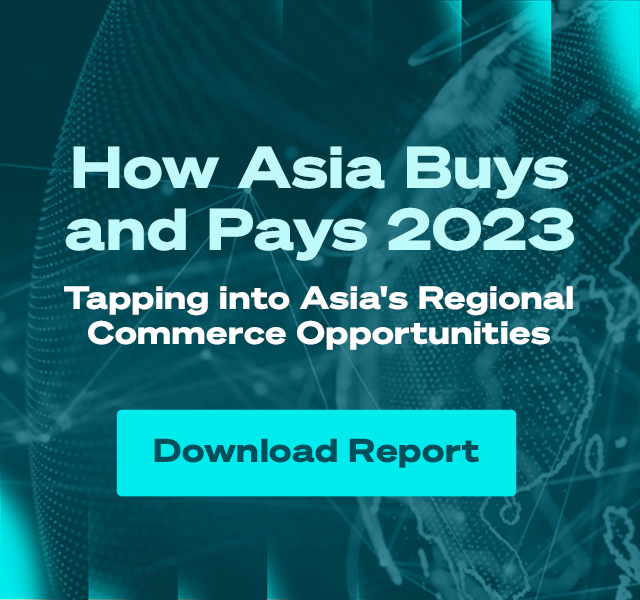
3 Alternative Payments Trends To Watch
Jade Lim, Director of Alternative Payments and Product Development, examines top trends in alternative payments that businesses should know.
Interested in learning more about payments and how to optimise your payments strategy? Read more insights from our team here.
No cash in your wallet? No problem at all! You can swipe your credit or debit card, or you can use one of many alternative payment methods (APMs) that have recently emerged to settle your payments.
APMs have become increasingly popular in recent years, and it’s not hard to see why: whether it is Buy Now Pay Later (BNPL), mobile wallets or QR code payments, APMs give consumers like you and I more ways to pay, which in turn streamlines the overall checkout experience.
The best part? Most APMs are conveniently housed under one device: your smartphone. With so many different payment methods literally available at our fingertips, we can order groceries or even a whole new bedroom setup anytime, anywhere.
Domestic purchases aside, the APMs on our smartphones also enable us to order foreign goods and services that cannot be found locally.
It’s clear that APMs have irrevocably altered the payments ecosystem worldwide. And APMs are only set to continue evolving well into the future. In this article, I’ll walk you through three key APM trends that will shape the future of digital payments.
Trend #1: The growth of Buy Now, Pay Later (BNPL)
BNPL is a solution that lets you break up your purchases into bite-sized, interest-free instalments that you can repay over the span of three to four months. With BNPL, that previously unattainable high-end gaming PC is now within reach - three or four months is all you need to fully settle the bill!
Little surprise, then, that BNPL has been so readily embraced on a global scale. Estimated at USD125.09 billion in 2021, the global BNPL market size is projected to reach USD39.41 billion by 2030, growing at a CAGR of 26.0% from 2022 to 2030.
Closer to home in Southeast Asia, BNPL has also seen meteoric growth across the region. According to an IDC report commissioned by 2C2P, while BNPL spend made up just 1% of all ecommerce payments in 2020, this figure is projected to grow by 400% to reach 5% by 2025.
Some key BNPL players in the Southeast Asian market include:
At present, the Southeast Asian BNPL market is competitive and highly fragmented, with many players vying for a share of the pie: BNPL providers, ecommerce companies, multiservice providers, and banks. Market consolidations are already ongoing, and I fully expect this to continue as bigger BNPL players rapidly acquire smaller ones.
Taking things to a micro level, I personally feel that the current BNPL user experience is not as seamless on desktop. When you choose to pay via BNPL on your computer, you still need to be redirected to the BNPL service’s website and enter your login information to complete the transaction.
Given the growing trend towards tokenisation in online payments, there is a possibility for BNPL to be tokenised to facilitate frictionless checkouts. To this end, we will need to consider how we can implement a debit function to BNPL to serve as a protective layer should the initial transaction fail to clear.
Trend #2: Tokenisation of digital wallets
Now that we’re on the topic of tokenisation, let’s look at how this technology is increasingly becoming relevant to digital wallets. But before we get to that, what is tokenisation?
Basically, tokenisation is the process of protecting sensitive data by replacing it with a token. Think of the tokens like you would casino chips. Just like how each chip represents your money, each token represents your critical payment data.
In the world of payments, tokenisation not just secures your transactions, but also makes them faster and more frictionless. tokenisation was first implemented for credit cards, where cards are defaulted to ensure that customers don’t have to input their data for every transaction.
Tokenisation has also been applied to digital wallets. Let’s say I choose GrabPay for the first time on Lazada to buy a multipurpose clothes rack. I will then be given the option to bind my GrabPay wallet to Lazada’s app.
When I choose ‘Yes’, I am redirected to GrabPay to do the approval. GrabPay then sends the token to Lazada. When I make subsequent purchases on Lazada via GrabPay, I will no longer be redirected; my payments will instead be made seamlessly and automatically.
Given the increasing popularity and usage of digital wallets, 2C2P is implementing the tokenisation feature for digital wallets to allow wallet users to also store their details securely.
If you’re a merchant who is already working with us, good news: you’ll get to enjoy the tokenisation function as part of our suite of solutions.
With the tokenisation of digital wallets, you can expect the authentication process to be streamlined, where all payments are completed within the merchant’s app or website - no redirects necessary! In turn, incidents of dropped transactions will be reduced as more successful shopping cart conversions go through.
Trend #3: Standardisation of QR code payments
Tokenising digital wallets isn’t the only way to smoothen the payment process. Standardising QR code payments has proven to be another fantastic method, and I’ve seen this play out in many countries across Southeast Asia in recent years.
Governments and central banks in the region have been working tirelessly to establish consistent standards that unite all banks and agencies in a given country under one common QR code. By doing so, interoperability is established across multiple cashless payment channels, making it easier for merchants and consumers to pay and be paid.
Singapore was the first country in Southeast Asia and the rest of the world to launch a unified QR payment code. Launched in 2018, SGQR combined multiple QR payment codes under one common label and was adopted by 27 payment schemes including PayNow, NETS, GrabPay, and Singtel DASH.
With SGQR, I can easily pay for my char kway teow at my favourite hawker centre using any digital payment method of my choice. All I need to do is scan the QR code at the hawker stall with a banking app or mobile wallet app, and I’ll be able to pay for my food!
Other countries in Southeast Asia have also followed Singapore’s lead, such as Thailand’s PromptPay QR, the Philippines’ national QR standard (QR Ph), Indonesia’s QRIS, Vietnam’s VietQR, and Malaysia’s DuitNow QR.
These QR code payment systems are continuing to evolve, with linkages established to enable cross-border QR code payments. Earlier in 2022, Malaysia and Indonesia established a cross-border linkage between DuitNow and QRIS. And more recently, Indonesia further expanded its cross-border QR code payment linkage to Thailand.
More recently, an agreement to link Singapore’s QR code payments with four Southeast Asian countries (Malaysia, Thailand, Indonesia, and the Philippines) was announced. By enabling cross-border QR code payments, you will no longer have to bear the extra cost of currency exchanges when you make a payment overseas.
With this cross-border linkage, I’ll be able to pay for a batik dress I ordered from an Indonesian merchant in my currency (SGD). USD will not be used as the intermediary currency for the transaction, which means that I won’t have to pay extra for my currency to be converted to IDR.
The future is bright for APMs
The trends I’ve looked at so far are by no means exhaustive.
In general, APMs are accessible via smartphones. Given that the global smartphone penetration is estimated at 6.6 billion in 2022 and will only continue to increase over time, APMs will inevitably follow suit to cater to the needs of a world that is highly interconnected and globalised.
I’m excited for the new innovations that will arise in the APM space, and I look forward to being a part of these developments that will make payments seamless and intuitive for everyone.
About 2C2P
2C2P is a full-suite payments platform helping businesses securely accept payments across online, mobile and offline channels, as well as providing issuing, payout, remittance and digital goods services.
With over 250 payment options ranging from credit cards to mobile wallets and an alternative payments network of more than 400,000 physical locations, 2C2P is the preferred payments platform of tech giants, airlines, online marketplaces, retailers and other global enterprises.
Want to take your business further with alternative payment methods? Our friendly team is ready to help - talk to us today.

